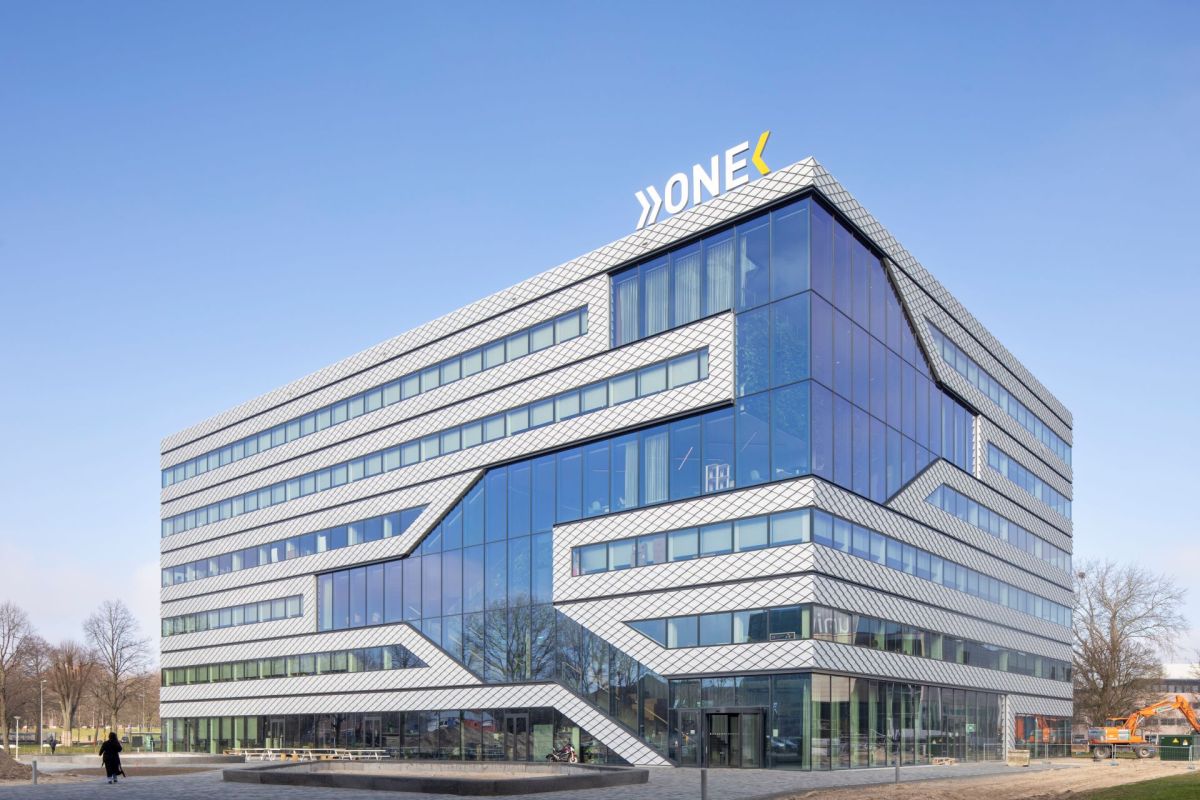The innovative Matrix One building presents a new vision for the future of architecture with its flexible, reusable, and energy-efficient design. Built to be easily reconfigured with thoughtfully developed features, this novel workspace was dubbed "one of the most sustainable buildings on the planet" by Interesting Engineering.
The largest of the seven buildings that comprise the Matrix Innovation Center in Amsterdam Science Park in the Netherlands, Matrix One has earned the BREEAM-Excellent green building certification for its ambitious infusion of sustainable thinking in every aspect of its design. The six-story hub is home to laboratories, offices, and social spaces that provide an ideal campus for scientists and entrepreneurs to explore sustainability solutions together.
According to MVRDV, the architects behind Matrix One, the campus hub "aims to be a sustainable example for the other buildings in Amsterdam Science Park and beyond." With the ability to be 90% dismantled and reused, the building offers diverse configurations of interior layouts.
Accessible screws and bolts, as well as exposed air ducts, allow the interior walls to be adjusted or removed to accommodate the changing needs of the space. An online database keeps track of nearly 120,000 building components as a reference to guide future alterations, according to Interesting Engineering.
To minimize its reliance on grid-based energy, the building features solar panels spanning much of its roof, insulating greenery, power-consumption monitoring, natural light and ventilation, and a water retention tank for storing rainwater. Design features also encourage healthy lifestyles by encouraging able-bodied persons to utilize the stairs and providing a bicycle parking area for those who ride to work.
A main goal of the multi-tenant structure is to facilitate innovation by providing spaces that encourage interaction and collaboration, from informal conversations that spark breakthroughs to meeting spaces for hosting group brainstorming sessions. At the heart of the design is its ability to change with the technology and needs of its tenants.
MVRDV partner Frans de Witte explained, "The building is state-of-the-art now, but it also acknowledges that the state-of-the-art is constantly changing … when the building is no longer cutting-edge, it will become a source to harvest materials from for other buildings."
Created from reusable materials, Matrix One's flexible design improves longevity and reduces the number of resources that would otherwise wind up in a landfill. Matrix One serves as a test of numerous strategies for developing greener buildings that could revolutionize architecture moving forward.
"In the future," de Witte said, "we hope this is how all buildings will work."
Join our free newsletter for weekly updates on the coolest innovations improving our lives and saving our planet.









